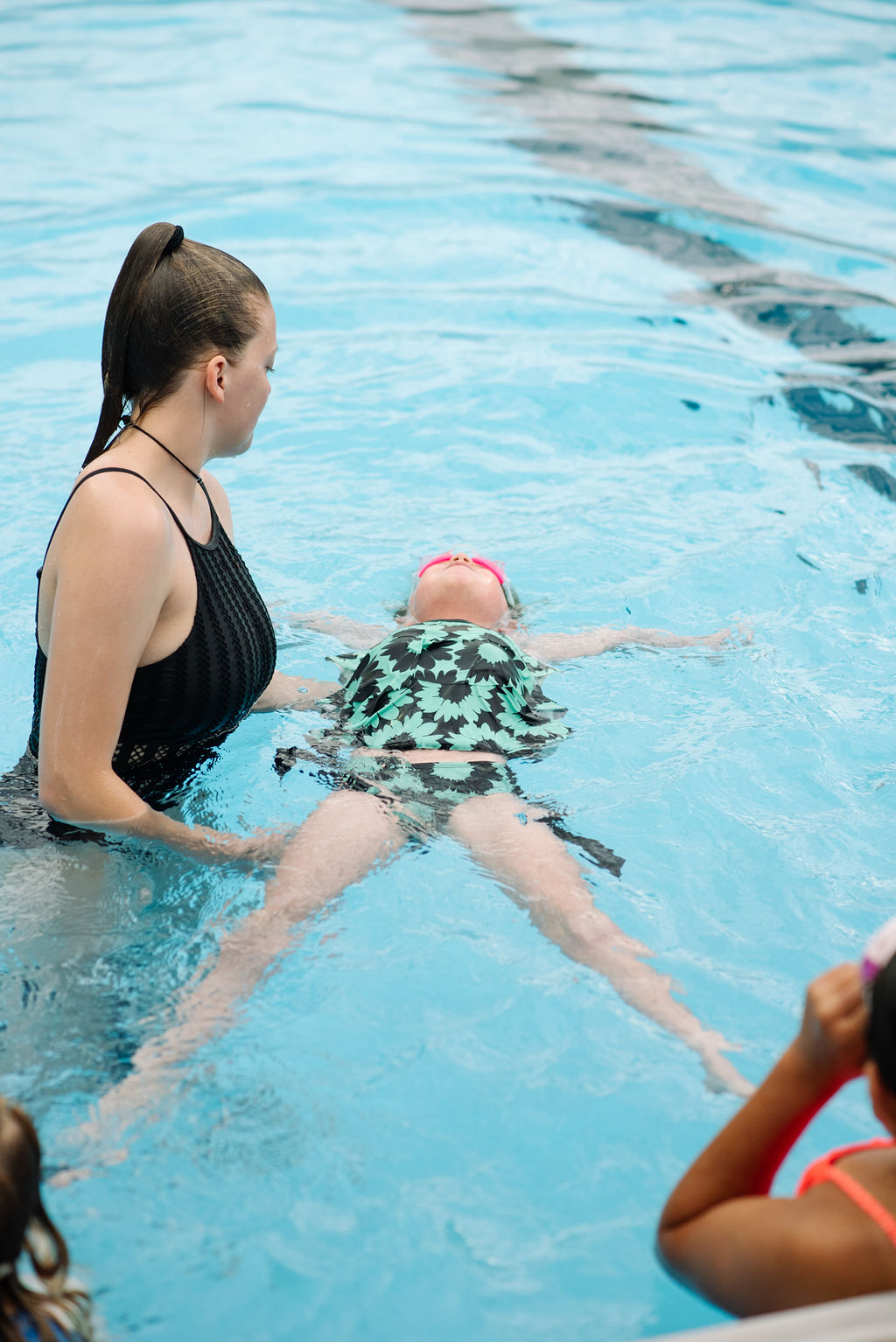
Children, especially young children, frequently do not like to be on their back in the water. There are many reasons behind this, and it is important to understand that it may take time and patience to overcome any anxiety or discomfort. Allow them to practice for as long as they feel comfortable. If they are only comfortable for two seconds, then start at two seconds and build gradually from there.
If losing sight of you causes increased anxiety, start with holding the child to your side while they straddle your hip and practice leaning back as if on a seesaw or teeter-totter. Challenge them to get their ears in the water.
To introduce a back float to a fearful or very young child:
• Begin slowly, holding the child in a vertical position with their back to your chest
• Ask them to rest their head on your shoulder (like a pillow) with their cheek next to yours
• Gradually lean back to bring the child more horizontal while continuing to hug them close and talking gently and encouragingly to them
• Hold this position for as long as they are willing
Teaching a back float to a hesitant or young child:
• Begin slowly, holding the child in a vertical position with their back to your chest
• Ask them to rest their head on your shoulder (like a pillow) with their cheek next to yours
• Lower yourself into the water by bending your knees
• As you get lower in the water gently push their hips away from you and up toward the surface of the water, keeping their shoulders against your chest
• Allow their ears to submerge in the water (unless directed otherwise by a doctor!)
• When the child begins to relax, loosen your grip while still maintaining contact so they can experience as much of their own buoyancy as possible
As they advance:
• Give them support at the hips or shoulders without resting their head on your shoulder
• Lower your hands slowly – if they sink to maintain contact with your hands, push them back to the surface and reposition them with their belly up and head back, if they continue to float, lower your hands further until they are able to float without support
Sometimes having their arms and legs spread out “like a starfish” will increase their surface area on the water and assist with their ability to float. They may need constant reminders to keep their head back, chin up, and belly up. Remember to be ok with them needing to take breaks. They will eventually be able to hold this position for longer periods of time.
